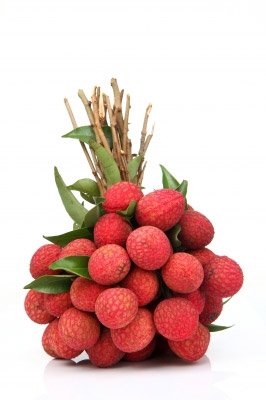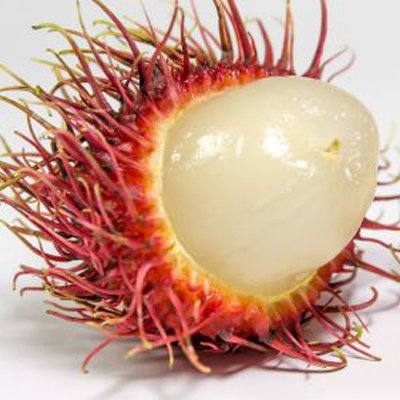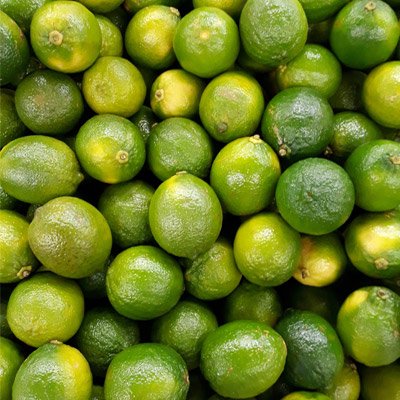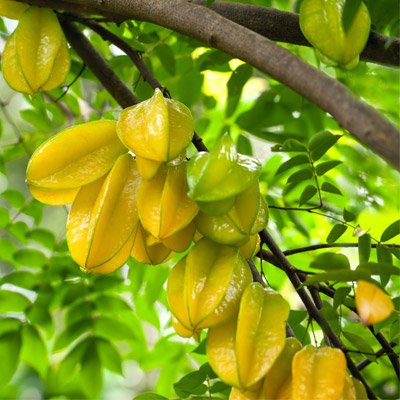How Do Rambutan, Longan, and Lychee Differ?
At first glance, you may be forgiven for thinking the Rambutan fruit is simply a rare, hairy Lychee.
If the pulps from the two fruits are presented to you, you will no know which fruit belongs to which shell.
The Rambutan pulp not openly resembles the Lychee pulp but also the Longan fruit.
All three are closely related and expose a similar fruit when opened.



- All three have white flesh, a big seed in the middle, and grow on trees.
- What makes the Rambutan different from the Lychee and Longan is the hairy shell.
- Lychee and Longan differ in color, but less the texture of the shell.
- The Longan is yellowish while the Lychee is more brown-redish.
- They all have a rich, sweet, creamy taste.
- In terms of size, the Longan is the smallest, then Lychee, and the Rambutan is the biggest.
- In terms of calories, the Rambutan fruit packs more calories than the other two.
Where does Rambutan Fruit come From?
The Rambutan fruit gets its name from the Malay word which means hair, thanks to its “hairy” skin/shell.
The shell is green when raw and depending on variety, it can turn a bright red with green hairs or a yellow or orange with green hairs.
The Rambutan thrives in tropical regions, more so in Indonesia and Malaysia.
Rambutan Health Benefits
The Rambutan fruit is packed with plenty of vitamins, fiber, and minerals thus making it very beneficial to the body.
Rambutan benefits include:
- Supports eye health of the eyes
- Can help reduce cholesterol
- Is an immunity booster
- Can help rejuvenate the skin
- Can help treat diarrhea
- Can help prevent cancer
- Can help clean the kidneys
- Can help prevent anemia
- Can aid in diabetes treatment
- Can improve heart health
- Has antibacterial and antiseptic properties which can help protect the body against numerous infections
- Can help promote healthy skin and hair
Many of those health claims are not backed up by science but are based on centuries of experience.
Nutrition facts for rambutan pulp (Nephelium lappaceum) are provided per 100 grams in the chart below. The nutrition facts provided below include both the absolute amount and the for each nutrient.
| Nutrient | Amount per 100 g | % Daily Value | Comment |
|---|---|---|---|
| Carotene | 0 mcg | 0% | |
| Vitamin B1 (Thiamin) | 0.02 mg | 1 % | |
| Vitamin B2 (Riboflavin) | 0.06 mg | 4 % | |
| Vitamin B3 (Niacin) | 0.78 mg | 4 % | |
| Vitamin C (Ascorbic Acid) | 39.5 mg | 66 % | A wonderful source of vitamin C |
| Calcium (Ca) | 7.9 mg | 1 % | |
| Copper (Cu) | 0.18 mg | 9 % | A good source of copper compared with other fruit |
| Iron (Fe) | 0.48 mg | 3 % | |
| Magnesium (Mg) | 17.4 mg | 4 % | |
| Manganese (Mn) | 0.19 mg | 10 % | |
| Phosphorus (P) | 16.5 mg | 2 % | |
| Potassium (K) | 179.7 mg | 5 % | Not a particularly good source of potassium compared with other fruit |
| Sodium (Na) | 6.3 mg | 0 % | |
| Zinc (Zn) | 0.21 mg | 1 % |

What Does Rambutan Taste Like?
The Rambutan has a sweet and sour taste with a dash of flowery flavor. The inside is soft and a little chewy. Its taste can be compared to a magical blend between a date and a grape.
How To Eat Rambutan Fruit
First, you need to find a ripe Rambutan fruit.
The shell color should be bright red with green hairs or spines, which is how you will know that it probably is ripe to eat.
In the event you find blacked hairs instead of the green ones then the fruit may still be edible but it won’t be as fresh.
Some varieties have a yellow or orange shell color when ripe.
Get a sharp knife and slice around the rind of the fruit to expose the pulp or white flesh.
Gently peel off the skin to reach the pulp.
Remove the large seed in the middle and enjoy it! The seed can be easily reached and pushed out with the fingers.
Besides eating the pulp as is, the Rambutan fruit can also be added to sweet curries, tropical salads, added to juice, topped onto ice-cream, or blended into a smoothie.
The Rambutan Tree

If you are looking for a Rambutan tree for sale, you have to remember that the tree will only thrive in some tropical regions.
It will not survive in cold regions.
If you are in a tropical region then you need to know that the Rambutan trees are male, female, or hermaphrodite and can grow up to 50-80 feet in height.
They grow best in temperatures of 21-30C.
Rambutan research
- The Effectiveness of Rambutan (Nephelium lappaceum L.) Extract in Stabilization of Sunflower Oil under Accelerated Conditions
- Functional and nutritional properties of rambutan (Nephelium lappaceum L.) seed and its industrial application: A review
- Active Compound Identification in Extracts of N. lappaceum Peel and Evaluation of Antioxidant Capacity
Order Your Fruits Online
10 Best Fruit And Vegetable Delivery Services
Read Here





